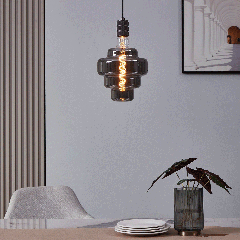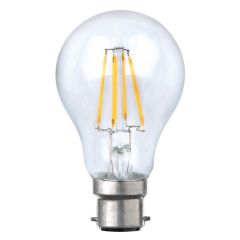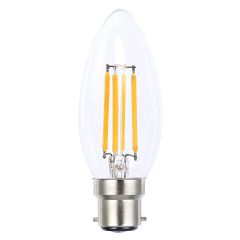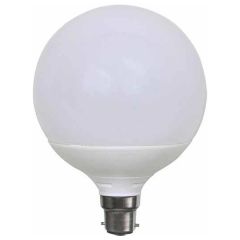Search results for: 'globes'
-
Vencha 6W G9 LED Filament GlobeSpecial Price $19.95 RRP $19.99 | Save 0%
-
8W E27 Dimmable LED G125 Spherical Globe - 2700K Warm WhiteSpecial Price $19.95 RRP $29.95 | Save 33%
-
8W E27 Dimmable LED G95 Spherical Globe - 2700K Warm WhiteSpecial Price $14.95 RRP $29.95 | Save 50%
-
Lusion R7s 118mm 9W LED Retrofit Globe 850 lumenSpecial Price $19.95 RRP $23.95 | Save 17%
-
Atom Candle B22 4W LED Globe 3000KSpecial Price $3.95 RRP $8.20 | Save 52%
-
Crompton E17 25W Clear Microwave Light GlobeSpecial Price $8.95 RRP $12.90 | Save 31%
-
Eglo Lighting 4W LED E27 Dimmable OR200 Globe - Vaporised Black - 2000KSpecial Price $31.35 RRP $79.95 | Save 61%
-
CLA PAR38 E27 15W LED Globe 1350 lumen IP65Special Price $22.95 - $29.95 RRP $29.95 |
-
GLS B22 8W LED Dimmable Decorative Filament Globe 800 lumenSpecial Price $9.95 RRP $11.95 | Save 17%
-
Eglo 7.5W LED B22 Dimmable G95 Round Globe - ClearSpecial Price $21.95
-
Eglo 7.5W LED B22 Dimmable G125 Round Globe - ClearSpecial Price $26.95
-
Candle B22 4W LED Dimmable Decorative Filament Globe 400 lumenSpecial Price $6.95 RRP $8.95 | Save 22%
-
Candle E14 4W LED Dimmable Decorative Filament Globe 400 lumenSpecial Price $6.95 RRP $8.95 | Save 22%
-
Lusion R7s 78mm 5W LED Retrofit Globe 400 lumen 2700KSpecial Price $17.95 RRP $20.95 | Save 14%
-
1000W Universal Replacement Infrared Heat LampSpecial Price $35.95 RRP $49.99 | Save 28%
-
Eglo 4W LED E27 Decorative Dimmable G95 Vaporised Round GlobeSpecial Price $9.90 - $41.95 RRP $41.95 |
-
Brilliant Coloured PAR38 15W LED Reflector GlobeSpecial Price $32.95 RRP $35.95 | Save 8%
-
Atom Candle B22 4W LED Globe 285 lumen 5000KSpecial Price $3.95 RRP $8.20 | Save 52%
-
Fancy Round B15 4W LED Dimmable Decorative Filament Globe 400 lumenSpecial Price $6.95 RRP $8.95 | Save 22%
-
Pear ST64 E27 8W LED Dimmable Decorative Filament Globe 800 lumenSpecial Price $12.95 RRP $16.95 | Save 24%
-
SAL G95 E27 10W LED Dimmable Globe 900 lumen 3000KSpecial Price $26.95 RRP $35.95 | Save 25%
-
SAL G95 B22 10W LED Dimmable Globe 950 lumen 6000KSpecial Price $26.95 RRP $35.95 | Save 25%
-
SAL G95 B22 10W LED Dimmable Globe 900 lumen 3000KSpecial Price $26.95 RRP $35.95 | Save 25%
-
SAL Tubular E14 2W LED Decorative Globe 200 lumen 3000KSpecial Price $8.95 RRP $13.95 | Save 36%
-
Eglo 7.5W E27 LED Dimmable ST64 Pear Globe - ClearSpecial Price $21.95
-
-
150W Universal Replacement Infrared Heat LampSpecial Price $15.95 RRP $19.95 | Save 20%
-
SAL MR16 4W LED Globe Tri Colour 400 LumenSpecial Price $8.95 RRP $9.95 | Save 10%
-
Atom Pear ST64 B22 5W LED Amber Decorative Filament Globe 430 lumenSpecial Price $13.95 RRP $17.95 | Save 22%
-
Eglo 4W LED E27 Decorative Dimmable ST64 Pear GlobeSpecial Price $8.25 - $27.95 RRP $27.95 |
-
Telbix Banana E27 8W LED Decorative Filament Globe 620 lumenSpecial Price $22.95 RRP $27 | Save 15%




























































